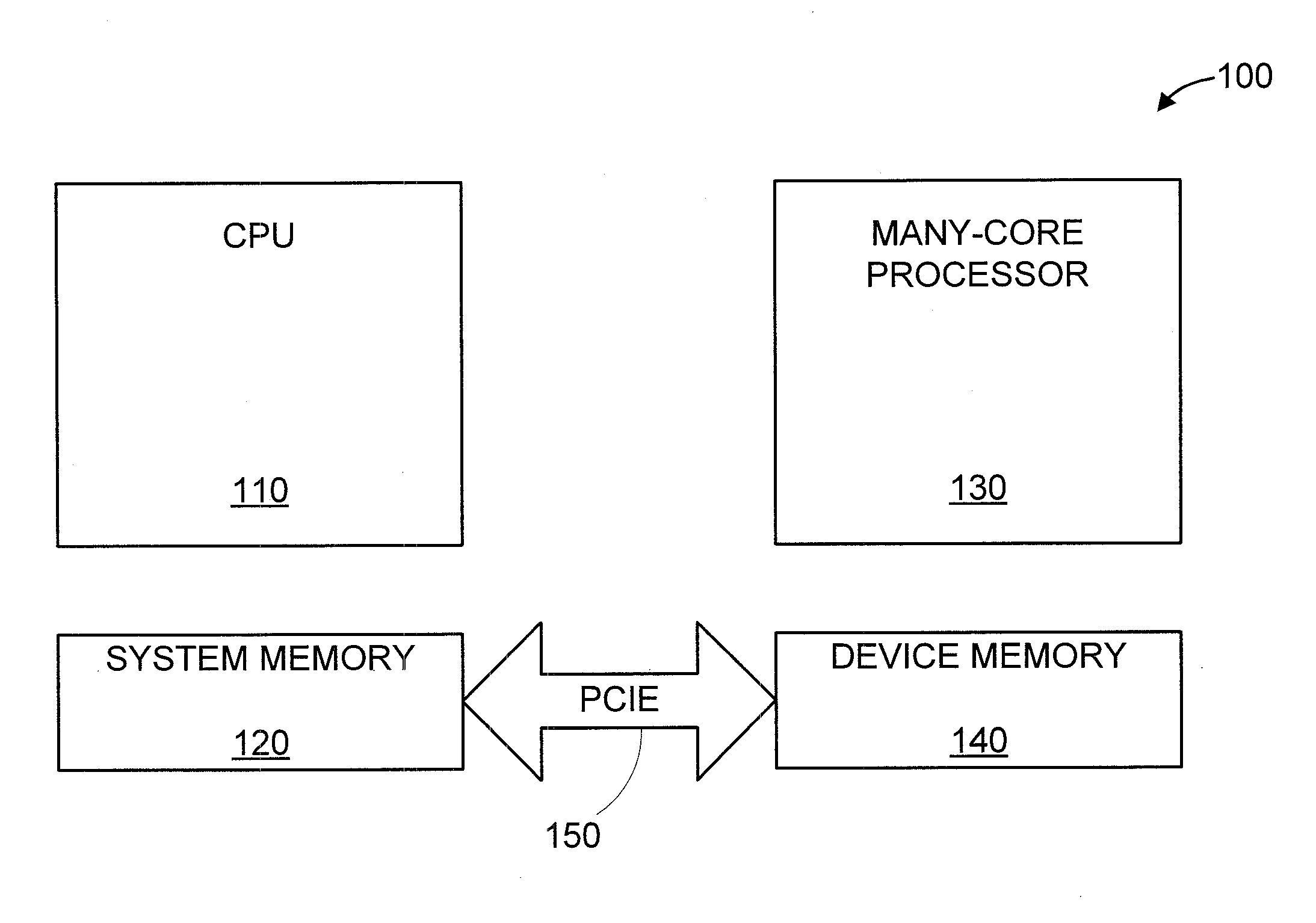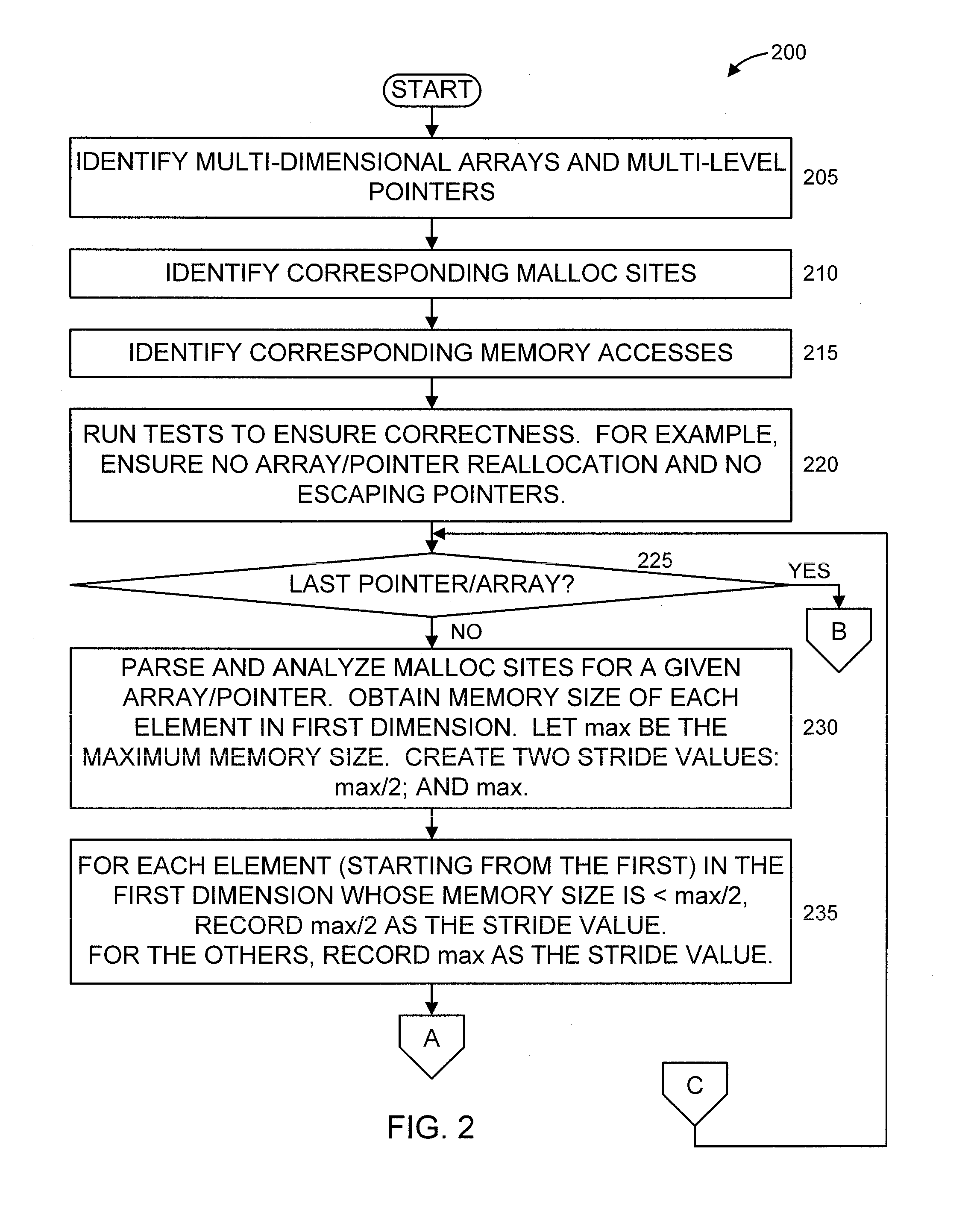Automatic communication and optimization of multi-dimensional arrays for many-core coprocessor using static compiler analysis
a multi-core coprocessor and compiler technology, applied in the field ofsignal communication, can solve the problems of unsatisfactory performance, runtime coherence mechanism with very high data transfer overhead, and lack of automatic and efficient methods of performing the sam
- Summary
- Abstract
- Description
- Claims
- Application Information
AI Technical Summary
Benefits of technology
Problems solved by technology
Method used
Image
Examples
Embodiment Construction
[0015]The present principles are directed to automatic communication and optimization of multi-dimensional arrays and / or multi-level pointers for a many-core coprocessor using static compiler analysis. In an embodiment, the present principles are specifically directed to an Intel® many-core coprocessor. However, given the teachings of the present principles provided herein, one of ordinary skill in the art can readily extent such teachings to other many-core coprocessors, while maintaining the spirit of the present principles.
[0016]Advantageously, the present principles solve the problem of automatically and efficiently orchestrating data transfers between CPU and Intel many-core coprocessors over PCIe. In an embodiment, the present principles solve this problem for multi-dimensional arrays and multi-level pointers.
[0017]In an embodiment, the present principles solve the aforementioned problem using pure static compiler analysis and, therefore, do not incur runtime overheads like in...
PUM
 Login to View More
Login to View More Abstract
Description
Claims
Application Information
 Login to View More
Login to View More - R&D
- Intellectual Property
- Life Sciences
- Materials
- Tech Scout
- Unparalleled Data Quality
- Higher Quality Content
- 60% Fewer Hallucinations
Browse by: Latest US Patents, China's latest patents, Technical Efficacy Thesaurus, Application Domain, Technology Topic, Popular Technical Reports.
© 2025 PatSnap. All rights reserved.Legal|Privacy policy|Modern Slavery Act Transparency Statement|Sitemap|About US| Contact US: help@patsnap.com



